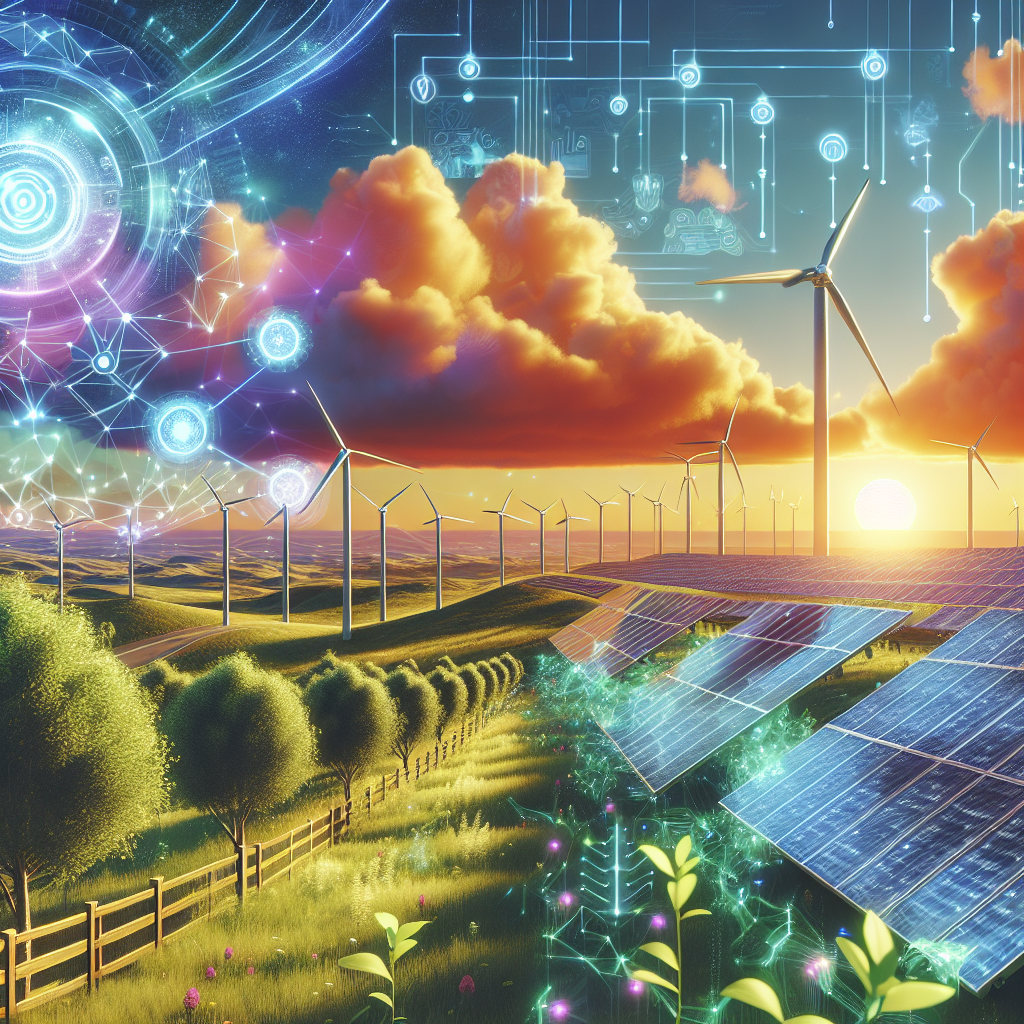As the world continues to grapple with the challenges of climate change and the need for sustainable energy solutions, artificial intelligence (AI) is emerging as a powerful tool in transforming the energy sector. AI technologies are being deployed in various aspects of the energy industry to enhance sustainability, improve efficiency, and drive innovation. From optimizing energy production and distribution to enabling predictive maintenance and reducing energy waste, AI is revolutionizing the way we generate, consume, and manage energy.
One of the key areas where AI is making a significant impact in the energy sector is in the optimization of energy production and distribution. AI algorithms are being used to analyze vast amounts of data from sensors, meters, and other sources to optimize the performance of energy generation facilities such as solar farms, wind turbines, and power plants. By using AI to predict energy demand, optimize production schedules, and adjust energy output in real-time, energy companies can reduce costs, improve efficiency, and minimize environmental impact.
In addition to optimizing energy production, AI is also being used to improve the efficiency of energy distribution systems. Smart grids, which use AI algorithms to monitor and control energy flow, are enabling utilities to better manage energy distribution, reduce transmission losses, and integrate renewable energy sources into the grid. By using AI to analyze data from smart meters, sensors, and other sources, utilities can identify potential problems in the grid, predict equipment failures, and optimize energy flow to meet demand more effectively.
Another area where AI is driving innovation in the energy sector is in the development of predictive maintenance solutions. By using AI algorithms to analyze data from sensors and other sources, energy companies can predict when equipment is likely to fail, enabling them to schedule maintenance before a breakdown occurs. This proactive approach to maintenance not only reduces downtime and repair costs but also extends the lifespan of equipment and improves overall system reliability.
AI is also being used to reduce energy waste and improve energy efficiency in buildings and industrial facilities. By using AI-powered energy management systems, companies can monitor and control energy consumption, identify opportunities for energy savings, and optimize building operations to reduce costs and environmental impact. From adjusting lighting and HVAC systems based on occupancy patterns to optimizing equipment usage and scheduling, AI is enabling companies to achieve significant energy savings and reduce their carbon footprint.
In addition to optimizing energy production, distribution, and consumption, AI is also playing a crucial role in enabling the integration of renewable energy sources into the grid. By using AI algorithms to predict energy generation from sources like solar and wind power, utilities can better manage the variability and intermittency of these renewable resources, ensuring a reliable and stable energy supply. AI is also being used to optimize the placement and operation of renewable energy assets, such as solar panels and wind turbines, to maximize energy production and minimize environmental impact.
Overall, AI deployment in the energy sector is enhancing sustainability by enabling companies to optimize energy production and distribution, improve efficiency, reduce waste, and integrate renewable energy sources into the grid. By harnessing the power of AI, energy companies can drive innovation, achieve cost savings, and reduce their environmental footprint, contributing to a more sustainable energy future.
FAQs:
Q: How is AI being used in energy production?
A: AI is being used in energy production to optimize the performance of energy generation facilities such as solar farms, wind turbines, and power plants. AI algorithms analyze data from sensors, meters, and other sources to predict energy demand, optimize production schedules, and adjust energy output in real-time.
Q: How is AI improving energy distribution?
A: AI is improving energy distribution by enabling utilities to better manage energy flow, reduce transmission losses, and integrate renewable energy sources into the grid. Smart grids use AI algorithms to monitor and control energy flow, identify potential problems, predict equipment failures, and optimize energy flow to meet demand more effectively.
Q: How is AI being used for predictive maintenance in the energy sector?
A: AI is being used for predictive maintenance in the energy sector by analyzing data from sensors and other sources to predict when equipment is likely to fail. This proactive approach to maintenance enables companies to schedule maintenance before a breakdown occurs, reducing downtime, repair costs, and improving overall system reliability.
Q: How is AI reducing energy waste and improving energy efficiency?
A: AI is reducing energy waste and improving energy efficiency by enabling companies to monitor and control energy consumption, identify opportunities for energy savings, and optimize building operations. AI-powered energy management systems adjust lighting, HVAC systems, equipment usage, and scheduling to achieve significant energy savings and reduce environmental impact.

